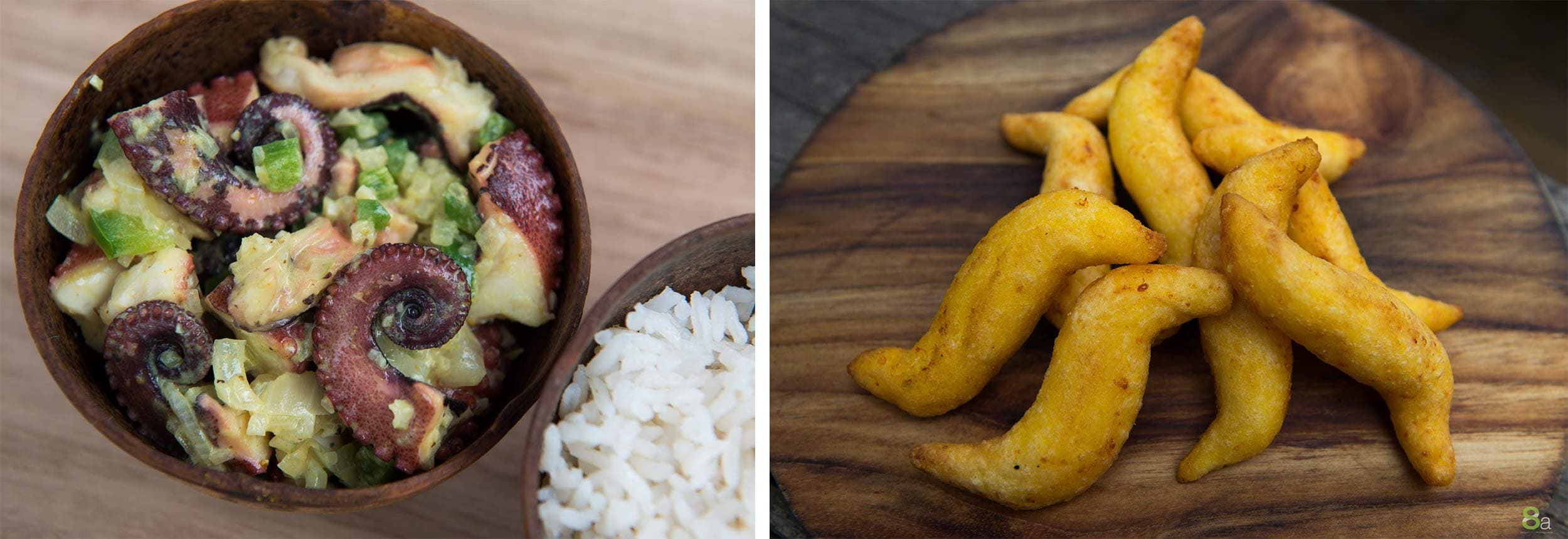Panama as a gastronomic tourism destination
7 cultures, more than 30 ingredients, one recipient: Panama. And all through a single channel: its gastronomy.
Panama is known worldwide for its melting pot of races that are commonly exposed by physical profiles, but did you know that this mixture is also reflected in their meals?
The passage of so many cultures left a mark in Panama. For Chef Charlie Collins, one of the most influential in the area, “Panama is a country with its own well-defined gastronomic identity” in which ingredients provided by each of those societies that were passing through or remained in the country.
Aboriginal
It is known that the first vestiges of habitants in the country where the natives who gave profit to all the fruits of the nature like: yucca, “ñame” and “otoe” that formed part of their daily plates. In addition, the meats, and fishes used to dry to the sun for their consumption and conservation, were also salted and packed in jars of mud cured to keep for long periods.
Africans
In 1548, with the arrival and permanence of the first black slaves from Africa in Panama, ingredients such as coconut and “ají chombo” resurfaced.

Spanish people
Later in 1800, with the presence of Spaniards, many of their meals were mixed with national ingredients. Chef Álvaro Perrino believes that the Panamanian’s taste for coffee, rice, and grains such as lentils, beans or chickpeas comes from the madre patria.
Chinese
In 1850, many Chinese arrived for the construction of the railroad and some of them remained here keeping the legacy of their typical foods through restaurants that are much visited today.
Afroantillanos
When construction of the French canal began in 1880, Afro-Antilleans began to arrive, introducing ingredients such as curry, cinnamon, and clavo de olor that were mixed with other Panamanian products. Initially, they settled in Colón and Bocas del Toro. On the Atlantic coast, they mixed and seasoned it with fish, cod, pickled fish and well-seasoned seafood. In Bocas del Toro, fried plantains, commonly known as “patacones”, began to be made.
French
With the presence of the Europeans, culinary processes changed in such a way that they were transformed into more refined processes, such as coercion, for the creation of new dishes.
North Americans
When Americans arrived in Panama, they also introduced famous fast food franchises that included hamburgers, hot dogs and French fries that have remained a favorite of some Panamanians to this day.
As a result of all these mixtures, the gastronomy of Panama is characterized by high consumption of rice and other inputs and ingredients such as corn, bananas, and seafood with which various dishes and fried foods are prepared. This great diversity has also allowed the existence of distinctive dishes or ingredients by region.
Among the most identifiable dishes of Panamanian cuisine we can highlight:
Sancocho: a soup made with patio (raised on a free backyard) chicken meat. Other ingredients such as coriander, oregano, onion, garlic, and vegetables are usually added. In the majority of the occasions, some tuber like the “ñame” is added to the plate.
Tamales: Consists of a corn dough seasoned and stuffed with chicken, pork or both. It is very common for the holidays to see this recipe on Panamanian dinners.
“Bollo preña ‘o”: For this one, the corn is also used and it is given a form of cylinder stuffed with chicken or pork in a stew. These are usually carried out in the western area of the country.
Changa: They are made with new born corn. They are generally made in the shape of a triangle, but their preparation may vary according to the province where they are made.
Rice with “guandú”: It is one of the most used dishes for national celebrations. It consists of adding this cook in the rice; it is accompanied by stewed meat and salads.
Ropa Vieja: This is the name with which it is commonly known in Panama, in other Latin American countries is known as shredded meat or “falda”. It is cooked with tomato, garlic, onion, and paprika. It is common to serve it accompanied by “patacones” or a portion of rice.
Chicheme: Created from corn, it consists of a drink mixed with cinnamon, nutmeg, vanilla, cornstarch, and sugar. It is very well known in the west; however, it also has variations depending on the area in which it is made.
Charlie Collins, describes a dish of food, in his Panamanian autochthonous cookbook “T’ach” as “a chapter in the history of a country” and the canal territory is a faithful proof of it; as a country of service where people from all over the world travel, Panama has proven to be a country with a great gastronomic offer ready to receive anyone who wants to know it. Meet these specialties in the most exclusive restaurants in Panama